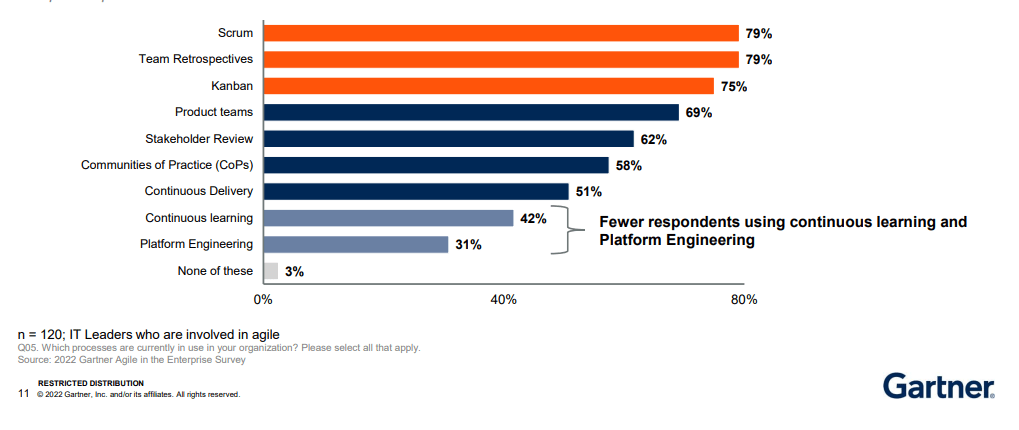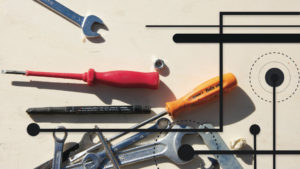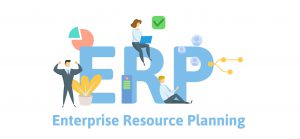According to the Scrum Guide, Scrum serves as “a framework within which people can address complex adaptive problems, while productively and creatively delivering products of the highest possible value.” In this framework, teams consist of only three roles: Product Owner, Scrum Master, and the Development Team.
To understand better who is responsible for quality assurance in the Scrum team, we need to analyze the responsibilities of all Scrum team roles.
In Scrum, the entire scrum team is expected to ensure quality, but what does it mean in real life? Are not the entire scrum teams responsible for all the testing? Or do they own quality?
Before defining quality ownership, we need to explore the meaning of quality in Agile, a widely used software development methodology. When talking about Agile software development, quality can be divided into two categories: intrinsic quality and extrinsic quality. Thus, it is possible to state that the definition of scrum quality comes from two separate sources – the client (external source) and the scrum development team (internal source).
What is quality in Scrum?
As we mentioned before, there are two types of quality in Scrum that is a subset of Agile:
- Intrinsic quality. It consists of all built-in qualities possessed by the product. That includes suitability, durability, or reliability, along with uniformity and maintainability. We can measure such a type of quality quantitatively thanks to test coverage, escaped defects, bugs per line of code, and so on.
- Extrinsic quality. This type serves as the customer’s perception of quality and, at the same time, the value of quality to the client. Extrinsic quality requires more qualitative measurement that depends on sales, usage, or buyer feedback.
When most people talk about quality, they talk about the intrinsic one. That is why companies must have team members called Quality Assurance (QA) specialists. These professionals do not evaluate the buyer’s perception regarding the product; their responsibility is to perform verification and validation. Both testing stages should give answers to the following questions:
- Are we building the product right?
- Are we building the right product?
Thus, the goal of verification and validation is to test whether the product corresponds to the collected business and technical requirements. Read more about testing stages in software development to know whether you can answer the above questions correctly while conducting verification and validation.
On Agile products, companies create products considering that all requirements tie back to a vision and a value proposition that is customer-oriented. If technical and business requirements do not align with such a vision, their reliability does not matter because they provide no value. The objective of all the iterations and releases is the provision of the highest value features that are balanced against the development costs necessary for building such features. Ultimately, it is the goal of all scrum sprints.
Is the Product Owner the one who owns quality in a scrum team?
We can provide a simple real-life example of how the Product Owner can address both intrinsic and extrinsic quality to facilitate a sprint planning meeting. The development team submits a backlog item for refactoring previously written code. The particular code caused a great increase in storage every time the report ran, which was an unexpected result regarding customer-facing requirements.
From a technical point of view, we assumed that the storage problem was egregious and the influence was significant. However, the efforts for code refactoring were also large. If it was a typical software development environment, we would assume that we could address such a defect automatically during the next release. Although we had a high-performing scrum master and development team, the Product Owner doubted the value of eliminating that defect in the current release.
That required an in-depth discussion of the problem and the analysis of the options, which finally led to a quantifiable measurement. For example, we could measure the technical debt of the discussed storage issue in dollars and compare it with the business value of other different requirements. Quantifying the problem allowed the Product Owner to remove the requirement that was a candidate for a current release. After all, the Product Owner understood that there were more valuable items in a plan for a relevant release.
Ultimately, it is impossible to quantify all issues of extrinsic quality against the intrinsic one easily. Therefore, the Product Owner owns the extrinsic quality. However, if your Agile team is mature enough, it can conduct the correct dialogue and make the decision that will allow balancing the short-term customer-facing objectives with the product’s long-term viability. Read more about our qa outsourcing services.
Quality ownership
Turning back to the initial question: who ensures quality management in Agile? When we speak about Agile roles, the best way is to apply the scrum team roles. According to Gartner, 79% of firms practicing the Agile approach now use Scrum.

According to Scrum Guide, “As Scrum Teams mature, it is expected that their definitions of ‘Done’ will expand to include more stringent criteria for higher quality.” Thus, we can claim that the whole scrum team owns the intrinsic type of quality. But the guide also indicates that the Product Owner is obliged to optimize “the value of the work” performed by the Development Team.
Finally, it is possible to state that the Product Owner is responsible for the extrinsic quality, which, as we have discussed, can supersede the intrinsic one.
Who is responsible for quality in Scrum in reality?
Even though companies understand quality ownership from a theoretical perspective, they rarely apply it in practice. Below we provide a list of some best practices that are critical for the Product Owner to be truly responsible for quality:
- QA specialists must report to the business;
- Signing off on design documents is the responsibility of the Product Owner;
- The Product Owner must approve all performance and non-functional requirements;
- Before adding all defects to the product backlog, they must be agreed by the Product Owner;
- The Product Owner is obliged to approve the scope of pre-production testing.
Thus, if organizations want to provide the Product Owner with quality ownership, they must implement the changes mentioned above on a cultural and organizational level.
At least, there is a need for companies to use the Development Team to educate the Product Owner on the costs and efforts necessary to resolve intrinsic quality issues. That can bring true value and quality ownership to the Product Owner.
The Product Owner must understand that the support and maintenance of well-written code require fewer costs. Ultimately, there can be an obligation to pay back technical debt, and only a qualified Product Owner can choose the best time to do this.
However, such an approach may often result in conflicts, especially within the emerging Agile teams. In the case of large traditional organizations, that can even deprive the IT department of the ownership to create the product and provide the business with the particular responsibility. This situation is intentional in the Agile environment, but we can ensure that delivering value to clients serves as the primary goal.
Of course, multiple well-built, highly reliable, and stable products remain on shelves as they could not satisfy customer requirements or missed the appropriate time to enter the market. On the other hand, many products were not built well enough but can gain a dominant market share.
FAQ
- How to ensure quality in Agile projects?
- Make sure that the acceptance criteria of your user stories are clear, concise, and understandable enough.
- Before starting the development process, ensure that all team members have the same understanding of why the user stories are needed.
- Encourage the three amigos to meet to flesh out the requirements and design decent scenarios.
- Who takes responsibility for ROI in Scrum?
ROI is one of the scrum quality metrics that help evaluate the efficiency of a scrum team in meeting business goals. In Scrum, the Product Owner is the only one who takes responsibility for ROI regarding the product development effort and its maximization by defining product features.
- Who owns the product backlog?
Product Owner.
- Can a QA specialist be a Scrum Master?
Yes. A Scrum Master is obliged to manage the process as a QA specialist because QA staff also manages the process within an organization (for example, SDLC, QA process, or project management). While a scrum master breaks the requirement in user stories, a QA specialist can break it in the form of test cases.
- What is the Quality Assurance role in Agile?
The QA plays a crucial role in all project methodologies, including Agile, because there is a need to verify the work requested for a project before its delivery, especially before end-users start using the product. Thus, the key function of QA is to provide testing of what has been developed and compare the actual results with the expected ones.
- Can the Product Owner be a Scrum Master at the same time?
No, it is impossible. In such cases, we can expect a Scrum Master to intervene. If the same person plays these two roles, the team will have no one to ask for help when it is necessary.
- What is quality management in Agile?
Agile quality management provides the transformative journey for streamlining product quality processes, replacing homegrown applications, and resolving issues effectively through the entire product value chain.
- What is the role of the Development Team in quality ownership?
There is a myth that only the development team takes responsibility for quality. But Scrum predicts the entire team to own quality, and all three scrum roles must cooperate to deliver excellence. With no proper product backlog and an explanatory backlog item, the Development Team can’t provide a high-quality increment. Thus, the entire Scrum Team owns the quality.
- What is the role of the Project Manager in QA?
A project manager is obliged to develop the quality management processes and ensure that all products are delivered the same as they were designed.
- What are the qualities of a good scrum master?
Among the key qualities for a good scrum master to have are the next:
- Communication;
- Responsibility;
- Neutrality;
- Leadership;
- Multitasking;
- Problem-solving;
- Scrum knowledge.
The bottom line
Most of the organizations that occupy the leading positions in their industries use the Agile methodology in software development, although there can be some exceptions. That allows for adding stability and reliability after their products achieve traction and validate the ROI regarding both initial and continuing investments.
Ultimately, the entire scrum team is responsible for understanding how all requirements, technical and functional, can bring value to clients. Such understanding needs close and efficient cooperation between the Product Owner, Scrum Master, and the Development Team. That means truly applying the “one team” concept and providing appropriate transparency into the decisions regarding the requirements to make in the release. Although the decision is the Product Owner’s responsibility, it can only take place in an environment that has correctly adopted the Agile practices.









